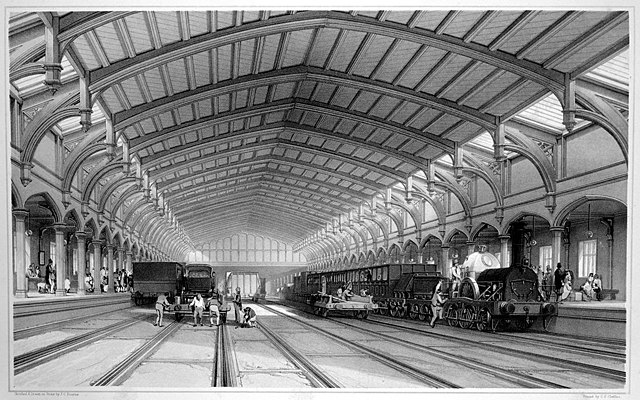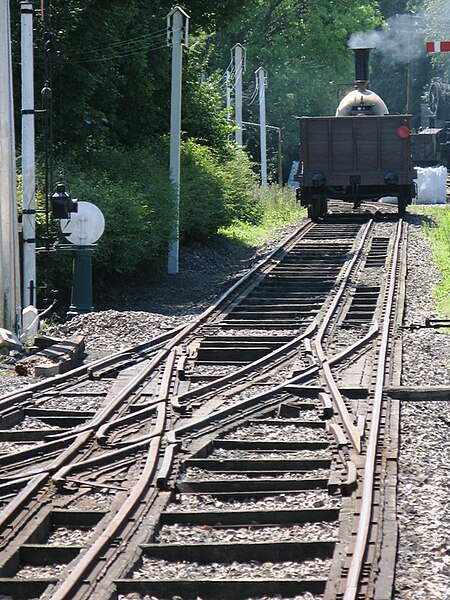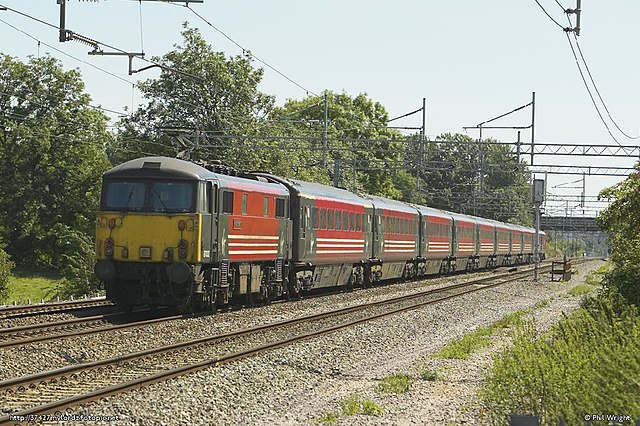The Great Western Railway (GWR) was a British railway company that linked London with the southwest, west and West Midlands of England and most of Wales. It was founded in 1833, received its enabling act of Parliament on 31 August 1835 and ran its first trains in 1838 with the initial route completed between London and Bristol in 1841. It was engineered by Isambard Kingdom Brunel, who chose a broad gauge of 7 ft —later slightly widened to 7 ft 1⁄4 in —but, from 1854, a series of amalgamations saw it also operate 4 ft 8+1⁄2 in standard-gauge trains; the last broad-gauge services were operated in 1892.
The interior of Brunel's train-shed at Temple Meads, the first Bristol terminus of the GWR, from an engraving by J. C. Bourne.
The Sonning Cutting in 1846
A broad-gauge train on mixed-gauge track
New corridor coaches on the Cornish Riviera Express
History of rail transport in Great Britain
The railway system of Great Britain started with the building of local isolated wooden wagonways starting in the 1560s. A patchwork of local rail links operated by small private railway companies developed in the late 18th century. These isolated links expanded during the railway boom of the 1840s into a national network, although initially being run by over one hundred competing companies. Over the course of the 19th and early 20th centuries, many of these were amalgamated or were bought by competitors until only a handful of larger companies remained. The period also saw a steady increase in government involvement, especially in safety matters, such as the Railway Inspectorate.
Class 87 electric locomotive and Mark 3 coaches operated by franchisee Virgin Trains
The first passenger service was at Oystermouth in 1807, photograph from 1870
Salamanca of 1812
Frith's The Railway Station, 1862 depiction of Paddington railway station in London








